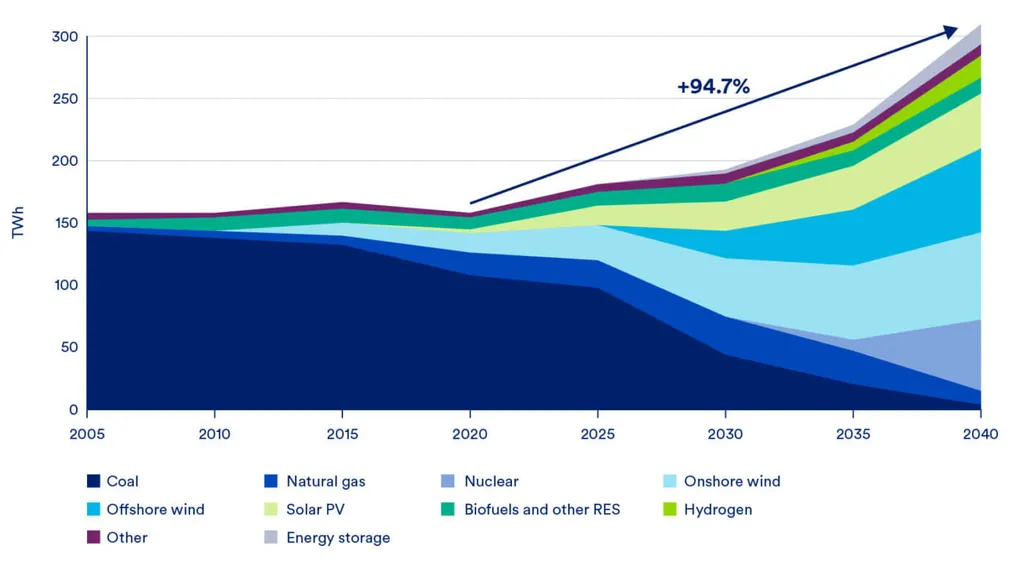In the heart of Poland’s energy transition, a significant study is shedding light on how to make natural gas a cleaner bridge fuel. Researchers from the AGH University of Krakow have published a study in the journal *Energies* (formerly known as Energies) that delves into the potential of integrating carbon capture technology with combined cycle gas turbines (CCGT), a common setup in modern power plants.
The study, led by Karol Sztekler from the Department of Thermal and Fluid Flow Machines, focuses on pressure-temperature swing adsorption (PTSA) as a means to capture CO₂ from flue gases. This technology could play a pivotal role in reducing emissions from natural gas power plants, which are expected to be a significant part of Poland’s energy mix in the coming decades.
The research employs computer simulations using IPSEpro software to model the heat and mass balances of CCGT and PTSA units. The team investigated the impact of different sorbent types—Na-A and 5A zeolites—and the share of flue gas directed to the PTSA unit on the overall performance of the CCGT.
One of the key findings is that CO₂ emissions from CCGT can be reduced by up to 1.1 megatons per year using PTSA technology. However, this comes with a trade-off. “The use of PTSA was associated with a reduction in net electrical power and efficiency of the CCGT by up to 14.7% for Na-A and 11.1% for 5A sorbent,” Sztekler explains. This efficiency penalty is a critical factor that energy providers must consider when evaluating the commercial viability of integrating carbon capture technologies.
The study also revealed that the heat and electricity demand of the PTSA unit is influenced by the adsorption and desorption pressures. This insight could guide future optimizations of the technology to minimize its operational impact on the power plant.
The research highlights the complex balance between emission reductions and operational efficiency. As Poland and other countries increasingly turn to natural gas as a transition fuel, the findings from this study could shape the development of more efficient and effective carbon capture technologies.
“The results of this study provide a solid foundation for further research and development in the field of carbon capture and storage,” Sztekler notes. “They underscore the need for continued innovation to make these technologies more viable for large-scale deployment.”
For the energy sector, the implications are significant. As the push for cleaner energy intensifies, understanding the trade-offs involved in integrating carbon capture technologies will be crucial. This study offers valuable insights that could guide policymakers, energy providers, and technology developers in their efforts to reduce CO₂ emissions while maintaining reliable and efficient power generation.
In the broader context, the research aligns with global efforts to mitigate climate change by reducing greenhouse gas emissions. As the world transitions towards a low-carbon future, studies like this one will be instrumental in shaping the technologies and strategies that will underpin this shift.

